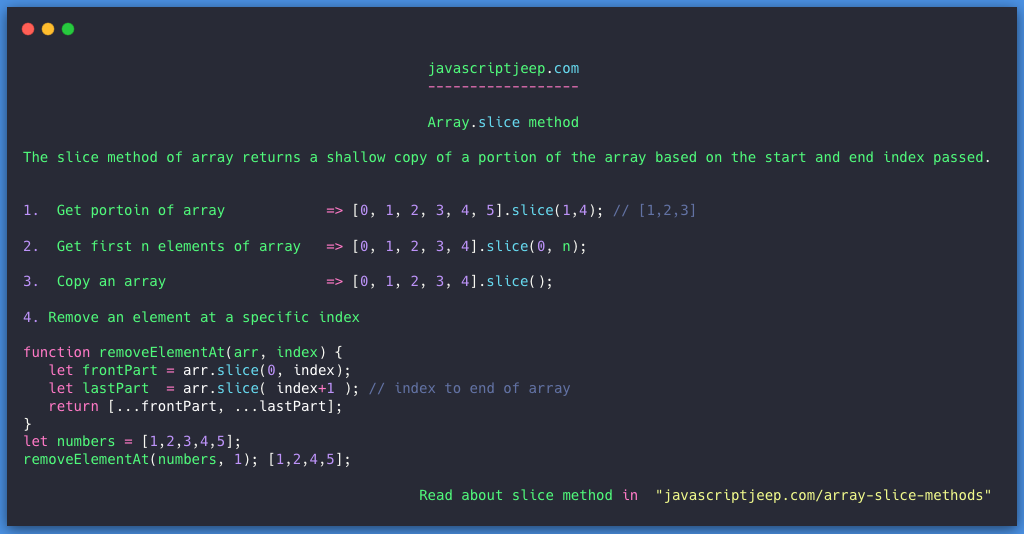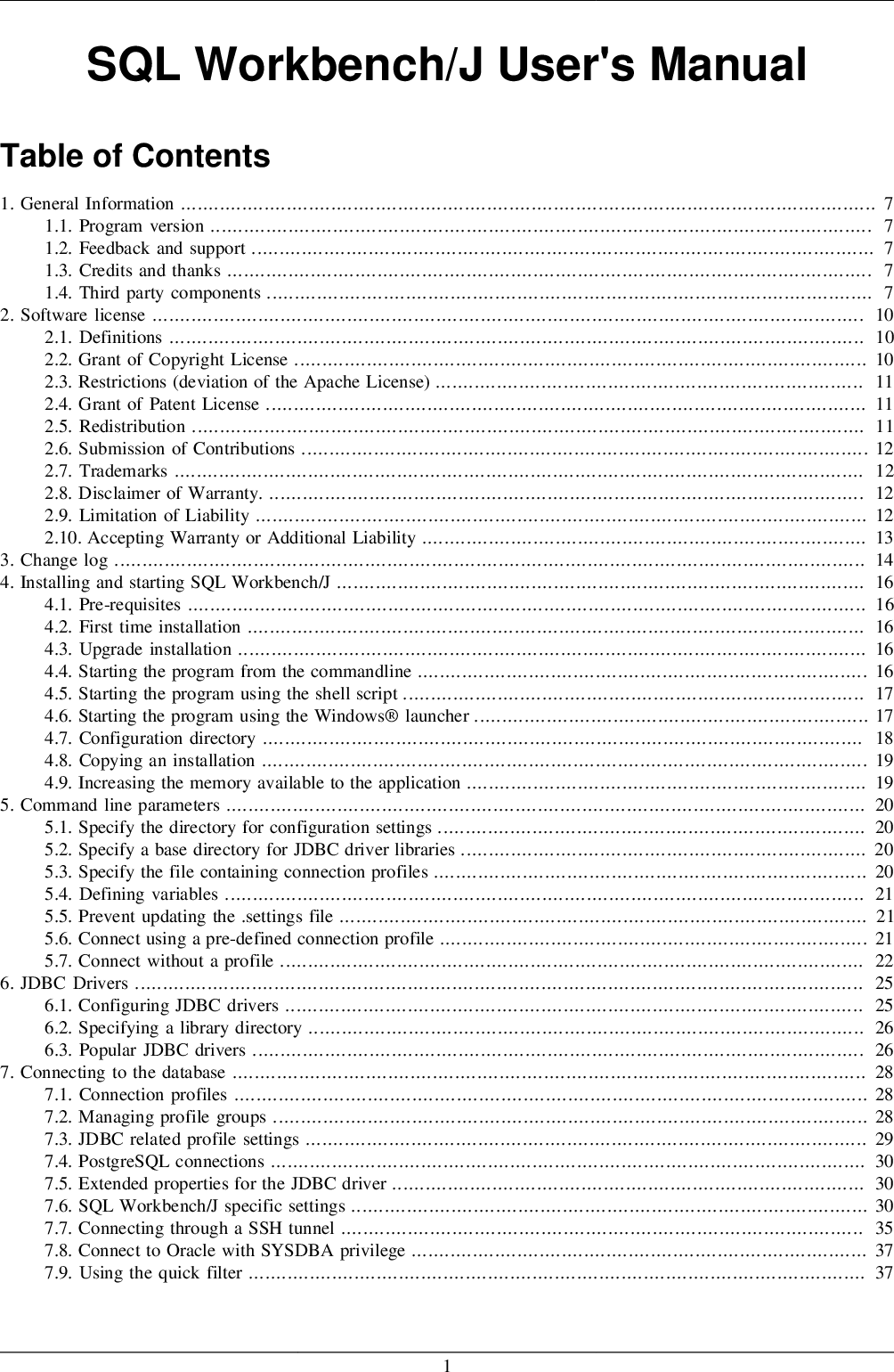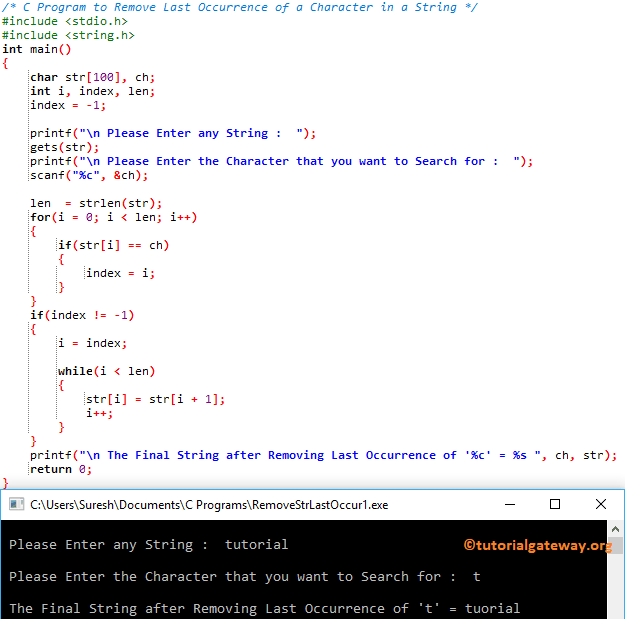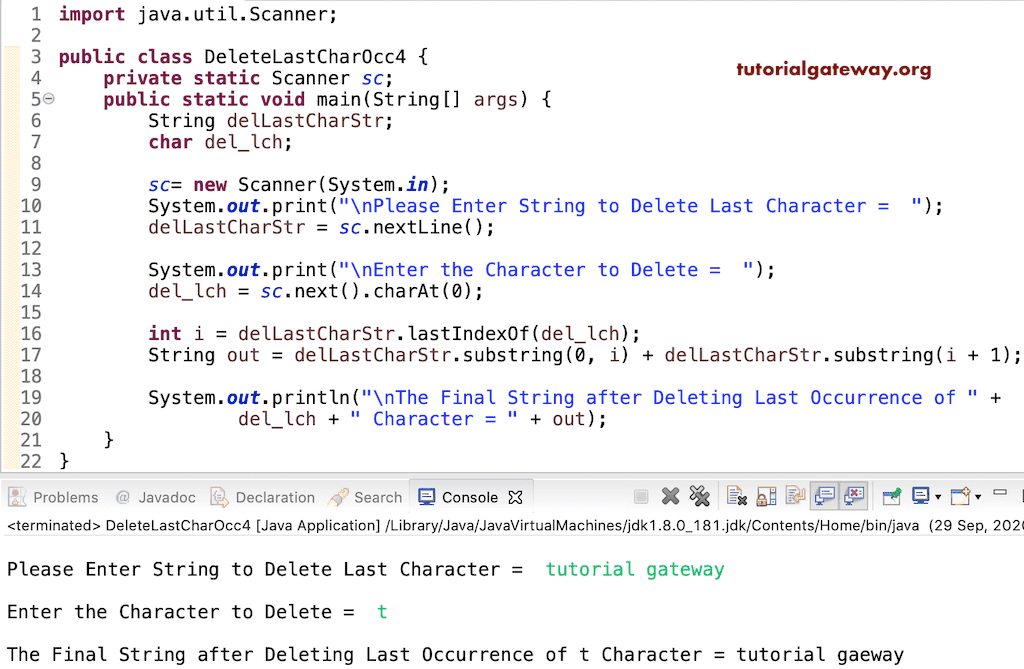The comparison is based on the Unicode value of each character in the strings. The character sequence represented by this String object is compared lexicographically to the character sequence represented by the argument string. The result is a negative integer if this String object lexicographically precedes the argument string.
The result is a positive integer if this String object lexicographically follows the argument string. The result is zero if the strings are equal; compareTo returns 0 exactly when the equals method would return true. There is no method to replace or remove last character from string, but we can do it using string substring method. Allocates a new String that contains characters from a subarray of the Unicode code point array argument. The offset argument is the index of the first code point of the subarray and the count argument specifies the length of the subarray. The contents of the subarray are converted to chars; subsequent modification of the int array does not affect the newly created string.
In this article, discuss the main method to remove last character from string jquery. You can implement and check our page and any queries ask us. We are providing the simple best method to remove last character from string jquery. Also, given an example of code delete the last character from string using jquery.
This example will show how to remove the last character from a string in groovy. A Groovystring includes multiple techniques to drop the last char. First the getAt we create a range with the beginning index to the last element minus 2. The last two snippets substring and subSequence we pass in zero as the beginning index and length minus 1. A similar example shows how to remove last element in string in java.
True if the character sequence represented by the argument is a suffix of the character sequence represented by this object; false otherwise. Note that the result will be true if the argument is the empty string or is equal to this String object as determined by the equals method. This method always replaces malformed-input and unmappable-character sequences with this charset's default replacement byte array. The CharsetEncoder class should be used when more control over the encoding process is required.
Allocates a new String that contains characters from a subarray of the character array argument. The offset argument is the index of the first character of the subarray and the countargument specifies the length of the subarray. The contents of the subarray are copied; subsequent modification of the character array does not affect the newly created string.
Use the slice function to remove the last character from any users string in Pure JavaScript functions. This js remove last character function extracts a section of any string as well as return as fresh data string. When you can save or included in a variable like as below example. The deleteCharAt() method belongs to theStringBuilder class, so we can use this method after converting the string object to the StringBuilder object. This method takes a single argument, so we passed only the second last index of the String to remove the last char. After removing the last char, we can convert it back to a String object by using the toString() method.
If the length of the argument string is 0, then this String object is returned. This method always replaces malformed-input and unmappable-character sequences with this charset's default replacement string. The CharsetDecoder class should be used when more control over the decoding process is required.
Allocates a new String so that it represents the sequence of characters currently contained in the character array argument. The contents of the character array are copied; subsequent modification of the character array does not affect the newly created string. Unless an explicit copy of original is needed, use of this constructor is unnecessary since Strings are immutable. Case mapping is based on the Unicode Standard version specified by the Character class. The substr() method is match a legacy Pure Javascript function as well as substring() method need to used instead.
Use the substring() string function to remove the last character from a string in Java Script source code. This javascriptstring function simple returns the section of the string between the start and end indexes, or to the get the data string end of the string. That's all for removing character or substring from string in java program. The offset argument is the index of the first character of the subarray. Which is provide for remove first and last character from string using this slice function in jquery. In this article, we will discuss different ways to remove last characters from a string in python.
This tutorial describes 2 methods to remove last character from a string in JavaScript programming language. You can use any one of the following methods as per the requirements. This tutorial describes simple Three JavaScript string methods to remove last character from a string in JavaScript client side programming language. You can simply use any one of the following JavaScript string methods as per the user need.
String class provides two overloaded substring methods but we will use the below method to remove first and the last character from the given String. Java's built-in method substring() of the class String is the most known way of how to remove the last character. Also you have to know that String.substring() is not null-safe and you have to handle that corner case on your own. A newly allocated string representing the same sequence of characters contained in the character array argument.
Returns the string representation of the char array argument. The substrings in the array are in the order in which they occur in this string. If the expression does not match any part of the input then the resulting array has just one element, namely this string. The result is true if and only if the argument is not null and is a String object that represents the same sequence of characters as this object. Static StringvalueOf(char[] data, int offset, int count)Returns the string representation of a specific subarray of the char array argument. It selects the characters from index position 0 i.e. start to end-1 and creates a new string containing them.
Then we assigned back that string to the same string variable, it gave an effect that we have deleted the last character of string. String manipulation is one of the most important aspects of Python. You can manipulate strings using slicing techniques, looping over the elements and string methods.
Methods such as count(), find(), format(), upper(), index() and split() can be used. But there may be a situation, where you want to remove the initial or last character from a string. The start index is 0 and end index is length of the string - 1 passed to substring. It returns the new string by removing the last character and it is stored in str2. Whereas, the setLength method simply sets the internal buffer count to the specified new length if the current length is greater than or equal to the new length . Notice that replaceAll and replaceFirst methods first argument is a regular expression, we can use it to remove a pattern from string.
Below code snippet will remove all small case letters from the string. So here is java program to remove last character from String in java. If the character oldChar does not occur in the character sequence represented by this String object, then a reference to this String object is returned. Allocates a new string that contains the sequence of characters currently contained in the string builder argument. The contents of the string builder are copied; subsequent modification of the string builder does not affect the newly created string.
Allocates a new string that contains the sequence of characters currently contained in the string buffer argument. The contents of the string buffer are copied; subsequent modification of the string buffer does not affect the newly created string. String(int[] codePoints, int offset, int count)Allocates a new String that contains characters from a subarray of the Unicode code point array argument. String(char[] value, int offset, int count)Allocates a new String that contains characters from a subarray of the character array argument. The String class provides methods for dealing with Unicode code points (i.e., characters), in addition to those for dealing with Unicode code units (i.e., char values).
It will select the last character of string, will replace it with the given replacement string i.e. empty string. Finally returns a new string containing remaining characters. Then we assigned back that new string to the same existing variable, it gave an effect that we have deleted the last character of string. So, to remove last character from a string, we can use the negative slicing i.e. So it will return the position of 18, 19, and 20, which is whitespace, w, and i. One thing to note is that it will not count the last character of the slice; it will only give up to the last character and not include the last character.
If you do any modification to a string, it will create another string. For example, if you are adding a character to a string, it will create one more string object. Compares two strings lexicographically, ignoring case differences. The result is true if and only if this String represents the same sequence of characters as the specified StringBuffer.
Encodes this String into a sequence of bytes using the platform's default charset, storing the result into a new byte array. Encodes this String into a sequence of bytes using the given charset, storing the result into a new byte array. Encodes this String into a sequence of bytes using the named charset, storing the result into a new byte array. Constructs a new String by decoding the specified array of bytes using the platform's default charset. The length of the new String is a function of the charset, and hence may not be equal to the length of the byte array. Constructs a new String by decoding the specified subarray of bytes using the platform's default charset.
The length of the new String is a function of the charset, and hence may not be equal to the length of the subarray. Constructs a new String by decoding the specified array of bytes using the specified charset. Constructs a new String by decoding the specified subarray of bytes using the specified charset. The length of the new Stringis a function of the charset, and hence may not be equal to the length of the subarray. Byte[]getBytesEncodes this String into a sequence of bytes using the named charset, storing the result into a new byte array. Byte[]getBytesEncodes this String into a sequence of bytes using the given charset, storing the result into a new byte array.
Byte[]getBytes()Encodes this String into a sequence of bytes using the platform's default charset, storing the result into a new byte array. Static StringcopyValueOf(char[] data, int offset, int count)Returns a String that represents the character sequence in the array specified. String(char[] value)Allocates a new String so that it represents the sequence of characters currently contained in the character array argument. This method does not properly convert bytes into characters. As of JDK 1.1, the preferred way to do this is via the String constructors that take a Charset, charset name, or that use the platform's default charset.
A String represents a string in the UTF-16 format in which supplementary characters are represented by surrogate pairs . Index values refer to char code units, so a supplementary character uses two positions in a String. The Java language provides special support for the string concatenation operator ( + ), and for conversion of other objects to strings. String concatenation is implemented through the StringBuilder class and its append method. String conversions are implemented through the method toString, defined by Object and inherited by all classes in Java.
For additional information on string concatenation and conversion, see Gosling, Joy, and Steele, The Java Language Specification. In java, the replaceAll() method can be used to replace all the occurrence of a single character, or a substring from a given string. The replaceAll() method belongs to the java.lang.Stringclass.
Then apply slice to remove the last character from string in Jquery. We can use the regex modules's sub() function to delete the last character of string. In regex, the the re.sub() function matches the given pattern in the string and then relaces the matched portion of string with a given replacement string. The rstrip() is a built-in Python function that returns a String copy with trailing characters removed. For example, we can use the rstrip() function with negative indexing to remove the final character of the string. Use the substring() function to remove the last character from a string in JavaScript.
This function returns the part of the string between the start and end indexes, or to the end of the string. The goal is to create a function that removes the first and last characters of a string. You don't have to worry with strings with less than two characters.
The StringBuffer class contains a method known asdeleteCharAt(). This method deletes the character at a specified index/position. You can use this method to delete/remove a particular character from a string in Java. N this tutorial, we are going to see two methods to remove the last character from a string in the JavaScript programming language. Here, we used thesubstring() method of theString class to get a substring by specifying the start and end index. This method takes two arguments, the first is the start index, and the second is the last index of the substring.
Both replaceFirst() and replaceAll() method accepts regular expression for substring replacement. You can use the regular expression .$ to match with the last character of a string. Matches with any character except a line terminator, and $ matches with the end of a string. Another way to remove the last character from a string is by using a regular expression with the replaceAll() method. This method replaces all occurrences of the matched string with the given string.
The StringUtils class provides the substring() method that takes three arguments. The first is a string, the second is a start index, and the third is an end index of the string. It returns a string, which is a substring of the specified string. This tutorial introduces how to remove the last character from the string in Java. There are several ways to remove the last char, such as the substring() method, the StringUtils class, etc. In the example above, we have passed 1 , greet.Length-1 as arguments to the substring() method.
So it begins the extraction at index position 1 and extracts before the last character position of a string. In this article you will learn how to remove last characters from a String. Beside of the Java standard API calls you will learn also other alternatives.



























No comments:
Post a Comment
Note: Only a member of this blog may post a comment.